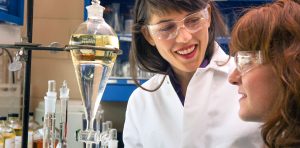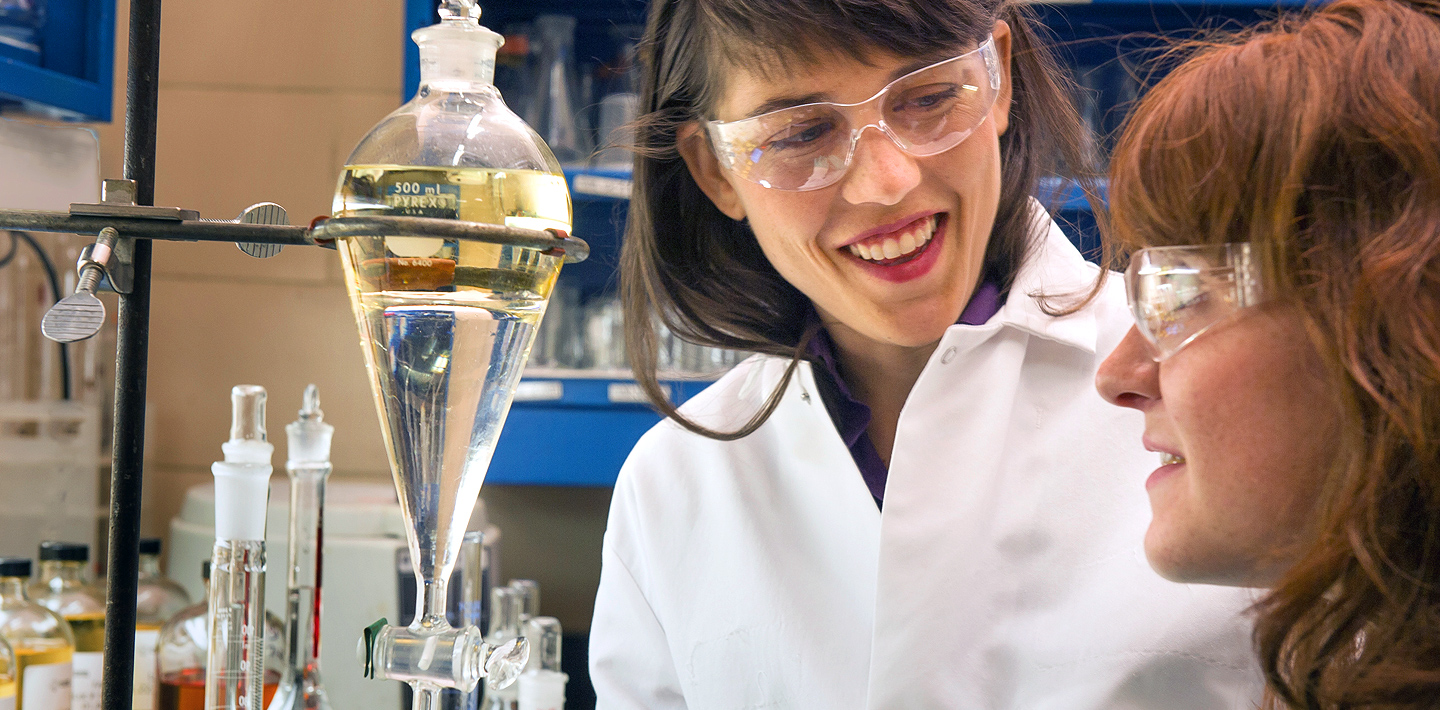By Gretchen Vannice, MS, RDN
Director of Nutrition Education and Research, AlaskOmega®
AlaskOmega has been processing fish oil for nearly 10 years. It’s not rocket science; it is lipid science, food science, mechanical, and chemical engineering applied to produce fresh and purified fish oils in various concentrations to improve global human health and nutritional status.
 We start with sustainably-sourced, wild Alaska Pollock that is caught for human consumption in the Bering Sea under the careful watch of the National Oceanic Atmospheric Administration. The Alaskan Pollock fishery, one of the longest working fisheries in the world, has a less than 1% by-catch rate; this is excellence in responsible fishing by any standard and extraordinarily low compared to by-catch rates reported in global and regional areas around the world. The Alaska Pollock fishery also meets the standards for sustainable fishing set by the Marine Stewardship Council (MSC), a global non-profit organization established “to protect the last major food resource that is truly wild: seafood”.
We start with sustainably-sourced, wild Alaska Pollock that is caught for human consumption in the Bering Sea under the careful watch of the National Oceanic Atmospheric Administration. The Alaskan Pollock fishery, one of the longest working fisheries in the world, has a less than 1% by-catch rate; this is excellence in responsible fishing by any standard and extraordinarily low compared to by-catch rates reported in global and regional areas around the world. The Alaska Pollock fishery also meets the standards for sustainable fishing set by the Marine Stewardship Council (MSC), a global non-profit organization established “to protect the last major food resource that is truly wild: seafood”.
Once the fish is caught, the roe is removed, fish meat is separated into fillet or to make surimi, then the remains are gently heated to separate the oil. This ‘crude’ fish oil is placed into air-tight totes in Alaska, then is shipped by boat to Washington State, then onto Ohio via railcar. In Ohio, composite samples are analyzed in the Wiley Companies Quality Laboratory before the oil is delivered to Wiley Companies Manufacturing facility. Upon arrival, the crude fish oil is about 15-20% EPA and DHA omega-3 and when we are through, we have produced fresh, purified, and concentrated oils that contain up to 80% EPA and DHA omega-3. We’ve also separated out palmitoleic acid, a mono-unsaturated fatty acid commonly called omega-7.
Our first step is a gentle, low-pressure distillation process where we remove water, some proteins, free fatty acids, cholesterol, PCBs, metals and other minor contaminants. Nothing added.
Now it’s time for triglyceride chemistry: Triglyceride is a common form of fat; it’s the form in which humans transport fat in our blood and store fat in our body. It’s also the most common form that occurs in animals, nuts and seeds, and fish. Fish oils naturally occur as triglycerides; that’s 3 (tri) fatty acids on a glycerol (glyceride) molecule. In order to concentrate the EPA and DHA omega-3 fatty acids, we remove the fatty acids (a mix of saturated, monounsaturated, and polyunsaturated fatty acids) from the glycerol molecule and attach them to ethanol (an alcohol), creating ethyl ester (EE) fatty acids.
Continuing on, we remove the glycerin, which has settled at the bottom of the tank, and remaining ethanol. Then we use a gentle distillation process to begin removing the saturated and monounsaturated EE fatty acids while preserving the intact integrity of EPA and DHA omega-3. At this point the oil has about 30-35% EPA and DHA ethyl esters.
Now it’s time for EPA and DHA chemistry: EPA and DHA are omega-3 fats with documented need in human health and nutrition. Omega-3s are essential fats, which means like vitamins, they are required in human nutrition but humans cannot produce them, so we must consume them in our diet or from supplements. They are unique fatty acids in that they are very long, highly unsaturated fatty acids; this makes them both special and challenging. EPA is comprised of 20 carbons with 5 double bonds while DHA contains 22 carbons bonds with 6 double bonds. Compare this to butter, for example, which contains primarily 14 and 16 carbon fatty acids with no double bonds (saturated fatty acids), or coconut oil, which is nearly half 12 carbon fatty acids with no double bonds (saturated fatty acids), or olive oil, of which the predominant fatty acid is 18 carbons with one double bond (monounsaturated fatty acid); none of these fatty acids are essential in human nutrition because humans can produce them on demand and their chemistry makes them pretty darn stable.
What makes the longer omega-3 polyunsaturated fatty acid chains special and challenging? Well, their chemistry makes them vulnerable to oxidation from oxygen exposure, vulnerable to destruction from heat, yet they are the fats that humans need. And so we go in our mission to support human health and wellness. Aiming to master the skilled art and science of protecting and preserving EPA and DHA omega-3s while separating the other fats is where AlaskOmega lives. In our 10 years, we’ve been able to produce fish oils that lead the market in freshness!
Moving on, we continue to separate saturated and monounsaturated fatty acids from polyunsaturated EPA and DHA omega-3. Then the concentrated EE EPA and DHA oil goes through multi-step filtering to remove any remaining impurities. Identify-preserved (non-GMO) mixed tocopherols are added as a natural stabilizer. Finally, the oil is packaged into air-tight containers which are topped off with Argon gas to further protect the oil from oxygen while it’s shipped around the world.
 The result is fresh, purified EE EPA and DHA fish oils, the form most used in clinical research around the world. The various ratios and concentrations we produce are then ready to be encapsulated alone, blended with other nutrients, incorporated into other supplement forms, or added to foods. We aren’t sending rockets to the moon; we are fortifying humans (and some pets) with nutritionally essential fats that have been extensively researched. From the more than 40,000 published research studies on EPA and DHA omega-3, including the more than 4,000 human clinical trials, we know this to be true.
The result is fresh, purified EE EPA and DHA fish oils, the form most used in clinical research around the world. The various ratios and concentrations we produce are then ready to be encapsulated alone, blended with other nutrients, incorporated into other supplement forms, or added to foods. We aren’t sending rockets to the moon; we are fortifying humans (and some pets) with nutritionally essential fats that have been extensively researched. From the more than 40,000 published research studies on EPA and DHA omega-3, including the more than 4,000 human clinical trials, we know this to be true.
PS. We also produce re-esterified triglyceride (rTG) forms of fish oil in various ratios and concentrations. To do this, we essentially reverse the process and re-attach the EE EPA and DHA omega-3s to glycerol, re-creating triglycerides that contain more EPA and DHA omega-3s. Just another way to get EPA and DHA omega-3!
Gretchen Vannice is the Director of Nutrition Education and Research for Wiley Companies. She is a globally recognized expert, author, and speaker in omega-3 research and education.
Disclaimer: This information is offered for educational purposes only. It is the opinion and scientific interpretation of the author. It is not intended as medical advice of any kind. The educational information provided is not intended to diagnose, treat, mitigate, or cure any disease nor has this been reviewed or approved by the FDA.
Scientific References are available upon request.







